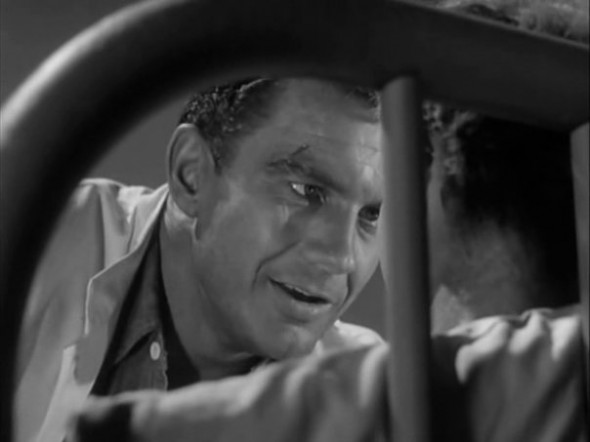Someone needs to rediscover the films of Samuel Fuller. Hopefully this feature will jump start the movement. Fuller spent the majority of his career digging deep into the darkness of the human psyche, finding the style in the most un-stylish of places and things, whether it be war (The Big Red One), psych wards (Shock Corridor) or a racist dog (White Dog).
That said, Fuller’s style started where style got it’s name: film noir. And while Underworld U.S.A. pales in comparison to Fuller’s noir masterpiece Pickup on South Street, it’s a lost gem of crime mythos, starring a young, tough Cliff Robertson doing his best James Cagney impersonation. (see it for yourself, for free, over at Crackle)
Underworld tells the story of Tolly Devlin (Robertson) and his fall into crime as a young teen who watches his father gunned down by thugs. Revenge becomes his reason to live. In order to have his vengeance, he must blend in with the people who took his father. The rest practically fills itself in. The young man becomes the tired man, his criminal facade slowly becoming very real.
Of course Fuller’s not breaking any new ground with the narrative. The writing feels a bit tired, full of speeches on corruption and justice and what it means to work in the business of both. There’s a scene in the middle of the film in which the police chief explains to his co-workers (and the audience) the logistics of organized crime and why it’s unstoppable. It’s a well thought-out monologue spelled out in layman’s terms, but it’s also a lecture, and lectures don’t belong in cinema.
Where Fuller’s film succeeds is through the lens. The violent, unblinking lens the man looked in throughout his career. The camera is a restless beast in between scenes of action, constantly moving, panning this way and that. When still, it’s commonly obstructed (see the still above), and when it’s not obstructed it’s almost too close to the subject’s face to bear. Close-ups like Fuller’s are hard to come by these days.
One has to wonder what use Fuller (were he still working today) would make of digital cameras like the Red. His violence 50 years ago is still cringe-worthy, and Ben Lane, Fuller’s make-up supervisor, is also to thank. Few people can frame bruises the way Lane does in this film. Watching Dolores Dorn‘s Cuddles, the film’s beautiful femme fatale, get beat up under Fuller’s watch is like watching someone destroy the Mona Lisa with a hack saw. It just hurts.
And though Robertson never quite made it into that A-list echelon of lead actors, Fuller has a clear use for him here, just as he does thespians like Mark Hamill and Lee Marvin in something like The Big Red One. Fuller recognizes Robertson’s strengths (testosterone) and weaknesses (subtle delivery) and casts/writes/frames accordingly.
This director was a man in charge, every step of the way. Take charge yourself and dive into his world. You won’t be disappointed.
What do you think of Samuel Fuller as a filmmaker? What’s your favorite film of his?


